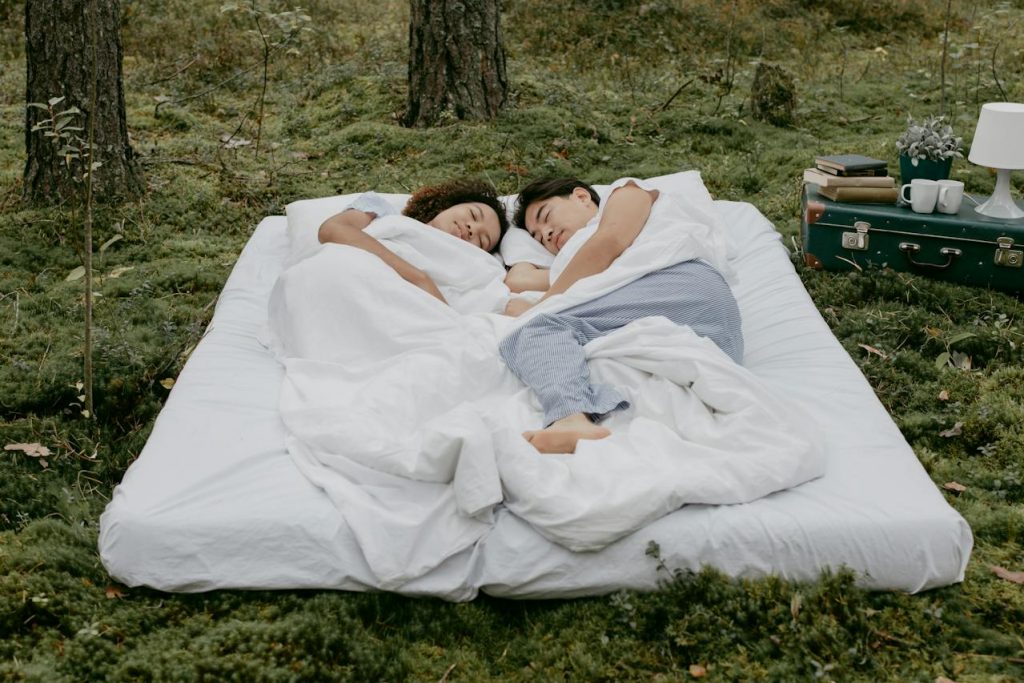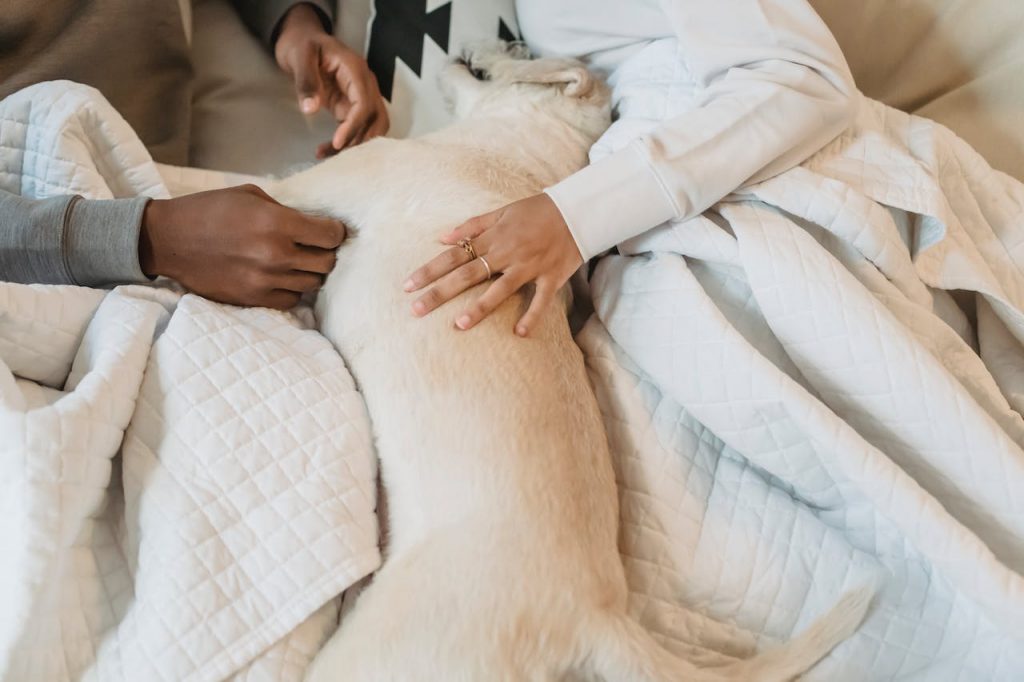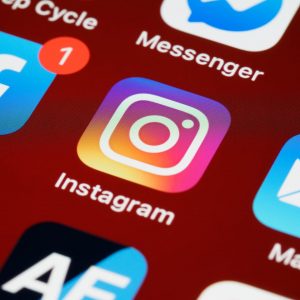When we decide to define cuffing season, it refers to the desire to settle down in a relationship during the colder fall and winter months. As the temperature drops, many single people start looking for someone to “cuff” and spend cozy nights inside with. But why does this phenomenon happen every year as the leaves start to change? What drives people to want relationships when the weather gets cold suddenly? This article will explore everything you need for navigating cuffing season relationships.
When Is Cuffing Season in 2023?
So, when is cuffing season? It takes place during the fall and winter months, typically from October through February. As the weather gets colder and daylight hours become shorter, people’s desire to come up and settle into a relationship increases. Late fall is when the cuffing season starts, as people begin looking for partners to spend cozy nights inside with during the winter. January is the peak cuffing season when online dating usage hits its highest point. By February and March, cuffing season dates taper off as spring approaches, and people feel less urge to have a partner.
JUST FYI: SZA’s Influence on Cuffing Season Popularity
In her viral 2017 song “Big Boy,” SZA sings the line: “It’s cuffing season, and all the girls be needing a big boy. I need a big boy, I want a big boy.“
This direct reference to “cuffing season” in the lyrics helped solidify the term in pop culture vernacular. SZA plainly states that it’s the cuffing season when people desire partnership while asserting her own desire for a partner during that time.
The relatable lyrics struck a chord, with many listeners realizing they had experienced the same craving for intimacy during seasonal relationships as the weather turned cold. After the song’s release, searches for “cuffing season” spiked as people wanted to learn more about this cultural concept SZA had named outright.
By boldly proclaiming it was cuffing season in her lyrics, SZA cemented the phrase as a widely understood way to describe the phenomenon of autumn coupling. Her hit song propelled cuffing season into mainstream pop culture terminology.
The Science Behind Cuffing Season
There are several biological reasons that humans tend to couple up more during the colder months, called cuff it season. To start, humans likely evolved to huddle together against the cold. Our early ancestors had to share body heat to survive frigid winters, leading to relationship behaviors becoming ingrained.
In addition, our melatonin levels rise as days become shorter in the fall and winter. This makes us want to stay home more rather than go out to socialize. With less motivation to meet new people, we turn our focus inward. This can elevate the appeal of coupling up with someone you already know.
Hormones also play a role. Serotonin, dopamine, and oxytocin levels can increase when we feel affection and intimacy. Colder weather subconsciously has us craving that hormone boost, driving the desire to cuff it season.
Online dating usage also climbs significantly between October and February. People seem more eager to match and meet when temperatures drop outside. The science is clear – human biology influences us to couple up when winter hits.
The Pros and Cons of Cuffing Season Relationships

Cuffing season relationships offer several potential benefits. Having someone to spend long nights inside with can provide companionship during the colder months. Physical intimacy needs also get met, which is part of why get cuffed season occurs.
There’s also the comfort of having a consistent partner for social events over the holidays. However, the cons must be considered too. Cuffing season attachments are often situational and temporary. This can lead people to lower their standards just to have someone.
Expectations in season relationships are also challenging to navigate. Each person may have different expectations about commitment or longevity. When spring arrives, previously overlooked issues in the relationship can emerge.
While cuffing season relationships offer short-term fulfillment, they must be entered carefully and mindfully. Setting clear boundaries and expectations from the start helps avoid hurt feelings down the line.
How Do I Understand That I Need a Partner for Cuffing Season?
You’re feeling lonely more often
As the days get shorter and your friends become busier, you may start to experience more frequent feelings of loneliness during the cuffing season calendar. Craving companionship is one sign that a cuffing partner could be beneficial. If you notice yourself feeling blue or isolated during the colder months, it may be a sign that a partner could lift your spirits.
You want someone to curl up with

When the temperature drops, having someone to cuddle with on the couch while watching movies or drinking hot chocolate is very appealing. If you find yourself longing to curl up next to someone under a blanket, it’s often the prime motivation for a cuffing relationship. Don’t ignore your desire for physical closeness.
You miss physical intimacy
Sexual and physical intimacy needs don’t disappear just because it’s cold outside, and it’s time for cuffing season calendar. If you notice your libido spiking as the temperature drops, it may be manifesting as the urge to cuff someone. Wanting to satisfy your need for sex and affection is perfectly natural.
You’re craving a travel companion
The holidays and winter months are full of events, parties, and trips. If you dread attending these alone or wish you had a consistent plus-one, a cuffing partner could be a great option. Wanting someone to accompany you through the festive cold-weather season is a common reason to cuff.
Your biological clock is ticking
Due to hormonal changes and primal urges that emerge as the seasons change, you may feel your biological clock ticking louder, alarming about cuff season. The desire to settle into a stable relationship can intensify during cuffing months. Listen to those natural bodily rhythms.
You want arm candy
Cuffing season is prime time for holiday parties, family events and New Year’s Eve dates. Having an attractive partner on your arm at these functions can be appealing. Wanting to show off or enjoy the self-esteem boost? Consider a cuffing fling.
The urge to cuff someone comes from both psychological and biological drives. By tuning into your feelings and needs, you can determine if a season relationship would truly benefit you this winter.
JUST FYI: Top 10 Songs About Cuffing Season To Fall In Love
- “Cuff It” by Beyoncé – This sensual song celebrates enjoying intimacy during cuffing season.
- “Sweater Weather” by The Neighbourhood – An indie-pop anthem and quintessential fall romance song.
- “November” by Tyler the Creator – Tyler chronicles romantic and lustful feelings hitting in the fall.
- “Fallin’ All In You” by Shawn Mendes – Upbeat pop track about falling for someone just as the leaves fall too.
- “Cold Cold Man” by Saint Motel – Retro-pop tune warning, “Beware of the cold cold man during cuffing season.”
- “Fireside” by Arctic Monkeys – Alex Turner wants to rendezvous fireside to stay warm.
- “Snowman” by Sia – Perfect cuffing season song to add to this list. With lyrics like “Don’t cry snowman, don’t leave me this way/A puddle of water can’t hold me close/Baby can’t you see, I’m a mess without your touch?” it captures yearning for the warmth and intimacy of a lover as the weather gets colder.
- “Flannel” by Lucy Dacus – Wistful and sweet song about flannel sheets and blankets.
- “Cuff It” by Paramore – Hayley Williams demands “Cuff me if you wanna just stay stuck with me forever.”
- “Cuffing Season” by Maisie Peters – British pop songstress Maisie frankly states “Winter’s nearly here, it’s cuffing season.”
How to Navigate Cuffing Season Relationships
If you do seek a cuffing season relationship, some tips can help you navigate the situation smoothly. Online dating apps see peak usage in the fall and winter, so this can be a good way to find a partner.
Social events like parties, concerts, or art shows are also prime opportunities to meet someone. Wherever you meet a potential cuffing partner, communicate expectations clearly from the beginning.
Discuss whether you’re looking for something casual and short-term or more of a commitment. Explain what level of contact or exclusivity you want. Setting these boundaries prevents confusion.
Also, don’t be afraid to end things if it’s not a match. Cuffing season attachments don’t have to last all winter if you’re not feeling it. Be honest about your needs not being met.
Are They Really Interested In You, Or They Need a Partner for Cuffing Season?

When dating during get cuffed season, it can be tricky to decipher if someone genuinely likes you or if they are just looking for a temporary cuffing relationship. Here are some signs to help discern true interest in seasonal flings:
They want to spend non-cuffing quality time
Someone who is truly invested will want to do activities beyond just Netflix and chilling on the couch. They’ll plan thoughtful dates and outings even in the warmer months.
They talk about the future
If they mention future plans that involve you, like trips, concerts, or events next summer, it shows they see you as more than just a seasonal fling. Set up your cuffing season rules while hanging out with someone who signals they’re interested in you if that isn’t mutual.
They introduce you to their inner circle
Making you a priority by introducing you to close friends and family is a sign they value you as more than just a cuffing partner.
They are emotionally intimate
Having deep and meaningful conversations about more than just surface-level topics indicates emotional intimacy and genuine interest in who you are as a person.
They make consistent contact
If they keep frequent contact in between dates through texts, calls, or social media, it shows ongoing interest versus only reaching out when bored or cold.
They remember important details
When someone recalls subtle likes, dislikes, or meaningful memories, it demonstrates they are truly paying attention because they care, not only because it’s dating season.
They want to be exclusive
Asking for exclusivity and stopping the use of dating apps signals to see you as a real partner and rejecting other options.
They get you thoughtful gifts
Giving gifts that show thoughtfulness, like something related to an interest of yours, shows a desire to please you, not just fill a seasonal void.
They introduce you to their family and friends
If they eagerly bring you into their inner social circle, it indicates pride in you and a desire to integrate you into their life.
They make long-term plans
Talk of plans beyond winter, like a spring break trip or attending a wedding with you in summer, show commitment beyond just having a warm body for the cold months.
Pay attention to their investment, follow-through, and consistency. Dating season partners show short-term interest, while long-term prospects focus on you, the future, and the relationship’s growth. Trust actions over words when evaluating true intentions.
Will Relationships End After Cuffing Season?

Cuffing season relationships sparked by the desire for intimacy during colder months often fizzle out when spring arrives. The cuffed status tends to be temporary unless both people are invested in a long-term bond. According to surveys, around 2/3rds of such relationships dissolve by March or April. The reasons are varied.
Sometimes, the initial compatibility was situational, based on having a companion for the holidays or events. The relationship was founded on physical intimacy needs during the winter but lacked emotional depth.
Additionally, as temperatures warm and outdoor activities resume, couples spend less cozy time together. The traits that brought them together during chilly nights may drift apart in the sunshine. However, cuffing season relationships can evolve into lasting love if the foundation is strong enough.
Clear communication of expectations, emotional intimacy beyond physicality, and a shared vision for a future together are key. While many relationships do expire post-cuffing season, some blossom beautifully into lifelong partnerships after beginning as a winter fling. The strength and intent of the bond determine its ability to withstand the spring.
The Psychology of Cuffing Season Relationships
The psychology behind when most relationships start offers additional insights. Human beings have fundamental needs for belonging, intimacy, and companionship. Seasonal attachments can fulfill those needs temporarily.
Cuffing relationships can also be a way to avoid loneliness or manage emotional pain following a breakup. Having someone can be a distraction from personal problems or inner issues someone doesn’t want to face.
There are healthy and unhealthy reasons to enter a cuffing season relationship. Take time to reflect on your true motivations and goals before cuffing up. Are you addressing underlying needs, or just avoiding them?
Do People Cheat During Cuffing Season?
Despite cuffing season dates, many people still end up cheating or pursuing side trysts during the cold weather months. According to surveys, up to 50% of people in relationships admit to cheating on their partner, with even higher rates among younger demographics. This season is no exception.
In fact, some studies indicate cheating rates actually increase during the fall and winter months. This may be due to increased opportunities from holiday parties, travel, and social events where people are more likely to be exposed to potential new partners. Or it could stem from the temporary and transitional nature of many cuffing season relationships.
Regardless of exact statistics, cheating remains an unfortunate reality. Even committed cuffing relationships are not immune. If your partner’s routine, emotional intimacy, or communication changes drastically without explanation, it may point to infidelity. Have an open and honest conversation about your commitment to faithfulness. With trust and understanding, relationships can still thrive despite temptations. Stay vigilant, communicate expectations clearly, and focus on fulfilling each other’s needs to keep your relationship intact.
Signs Your Partner Is Involved In Side Relationships During Cuffing Season

Cuffing season relationships are supposed to provide intimacy, companionship and consistency through the colder months. However, some attached partners secretly pursue additional relationships on the side during this time. Here are some signs your cuffed partner may be cheating or involved with others:
Sudden changes in routine or availability
If your partner’s schedule suddenly changes, like they stop being available certain days or nights each week, it could point to side trysts. Excuses like unexpected work events or family obligations may cover time spent on cuffing season dates with someone else.
More frequent texting or hiding their phone
Increased texting frequency, hiding their phone screen when you enter the room or being very private about their online activities can indicate infidelity. Secretive digital behavior is a red flag.
Grooming or appearance changes
When someone is trying to impress another partner, they may invest more time and effort into their grooming and style. Noticeable improvements like new clothes, more workouts or changed hair could mean they are sprucing up for someone new.
Less interest in intimacy with you
A partner who suddenly shows less enthusiasm for physical intimacy with you but has a normal libido otherwise could be fulfilling those needs on side cuffing season dates. Lack of interest in you is specifically concerning.
Using new lingo or slang
People tend to pick up habits, phrases, and pop culture references from a new romantic interest. If your partner starts using new slang or referencing things that don’t seem like their taste, it can point to mimicking another partner.
Picking fights or emotionally withdrawing
Cheating partners often subconsciously sabotage their primary relationship. Picking fights or withdrawing emotionally from you can be an attempt to justify their side dalliances or relieve their own guilt.
Being very secretive about their activities or friends
If your partner stops telling you details about how they spend their time, who they hang out with, or what they do in their free time, secrecy like this can stem from hiding another relationship or their cuffing season dates from you.
Sudden increased interest in their appearance
When someone is focused on impressing and attracting a new partner, they often become hyper-focused on their looks. An unusual preoccupation with diet, exercise, grooming, and appearance can give way to an affair.
Trust your instincts. Small changes in routine, behavior, communication style, or closeness can be subtle indicators of cheating or outside entanglements during cuffing season. Protect your peace of mind by having an open and honest dialogue about fidelity.
Conclusion
Cuffing season relationships meet our human needs for intimacy and companionship during the cold months of the year. However, entering one requires mindfulness regarding expectations and motivations. Clarifying boundaries in the beginning helps set both parties up for success. If you do “cuff” this winter, be sure to reflect on what you truly want in this seasonal relationship before getting too involved. With open communication, the cuffing season can be a fun way to enjoy the cozy cold weather with someone special.
FAQs
What is the origin of cuffing season?
The term “cuffing season” first emerged in the 1990s, but the behavior has likely been around much longer. It originated from the slang “being cuffed” or tied down in a relationship.
How long do cuffing season relationships typically last?
Cuffing season relationships often last around 3-4 months, roughly from October through February. Some may extend into spring or become long-term if both people desire.
How do you know if you’re in a cuffing season relationship?
Signs include becoming a couple just as winter hits, frequently staying in together, and not going out much socially. Lack of future planning can also indicate a cuffing relationship.
What are the signs that a cuffing season relationship is not working out?
Signs include poor communication, frequent arguments, lack of intimacy, or one partner pulling away emotionally. Unmet expectations and needs in the relationship may also indicate it’s not working.
How do you break up with someone during cuffing season?
Have an honest conversation explaining how your feelings have changed. Offer an empathetic explanation, like changing needs or wanting different things to avoid hurting their feelings too badly.


